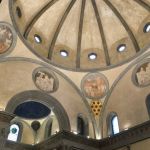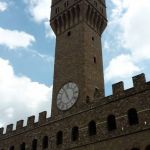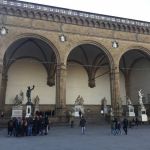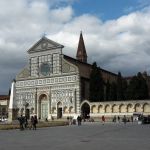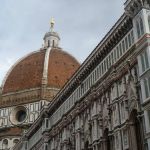Description
Developments in architecture from ancient times to the flowering of the Baroque age in Florence.
The city of Florence is a perfect backdrop for an itinerary focusing on architectural movements in art history. This itinerary concentrates on important architectural monuments in the city ‒ some of the world’s finest examples ‒ to trace the development of architectural styles. Monuments are placed in their social and historical context, as well as in the history of Western Architecture. We will discuss the origins of Western architecture in the Classical world and the contributions made by the Romans. The itinerary continues with a study of the medieval world with a look at the transformation of the urban landscape of the city ‒ from the defensive structures of the tower houses, built during a time of political strife, to the elegant and stately palaces of the wealthy Florentine elite and the structures created for the Communal government in time of relative peace. We will also visit landmark churches and basilicas to consider how philosophical ideas and changes in society had an impact on medieval religious architecture. By placing these structures in the context of Western architecture, we will examine how local architecture differed from typical northern European models. Subsequently, we will move into the Renaissance, discussing how it all began right here in Florence with the architecture of Brunelleschi. Observing great Florentine structures, we will uncover the underlying principles of Renaissance architecture and trace its developments to the innovations made by Michelangelo. Lastly, we will look at the Baroque age and define the changes implemented by the Counter-Reformation.
Architects discussed during the itinerary include Arnolfo di Cambio; Filippo Brunelleschi; Michelozzo; Leon Battista Alberti; Bernardo Buontalenti; Giorgio Vasari; Michelangelo; and Gherardo Silvani.
- Detail of the New Sacristy
- Detail of the Vestibule of the Laurentian Library
- The Laurentian Library
Below is a short description of some of the sites which can be included in the itinerary.
Visiting the hilltop town of Fiesole we will visit the ruins of an ancient Roman theater and discuss the roots of Western architecture. With a walking tour in the historical city center, we will discuss the foundation of the Roman colony of Florentia and uncover traces of the city’s ancient past. At San Miniato, one of the oldest churches in Florence, we will admire a fine example of Romanesque architecture and stunning mosaics. We will get a view of the surviving portion of the old medieval walls of town from atop the hill of the church. Then at the great basilicas of Florence, Santa Maria Novella and Santa Croce, we will follow the major technological advancements made in architecture during the gothic age, like the introduction of the pointed arch and its impact on church architecture. Making our way down the medieval streets of Florence, we will map out the numerous tower houses and discuss their function during the city’s tumultuous times. We will then follow the evolution of civic and residential architecture and see how the establishment of a stable government and economic prosperity transformed the city and its architecture. We will admire the grand palace residences of Florence’s elite families like the Medici and the Strozzi. At the churches of San Lorenzo and Santo Spirito we will see how Brunelleschi in the Renaissance brought back the application of principles of Classical architecture. Then, at the Laurentian Library, we will study how Michelangelo began to break the rules, giving us his own take on Classical forms as an architect of the Mannerism movement. Other examples of this deviation from the classical prototype can also be seen in the Courtyard of Palazzo Pitti, the Uffzi, and the façade of Santa Trinita. Lastly, the itinerary focuses on the beginning of the Baroque age and how the basilica was transformed to meet the requirements of a reformed Church at Ss. Michele e Gaetano.






